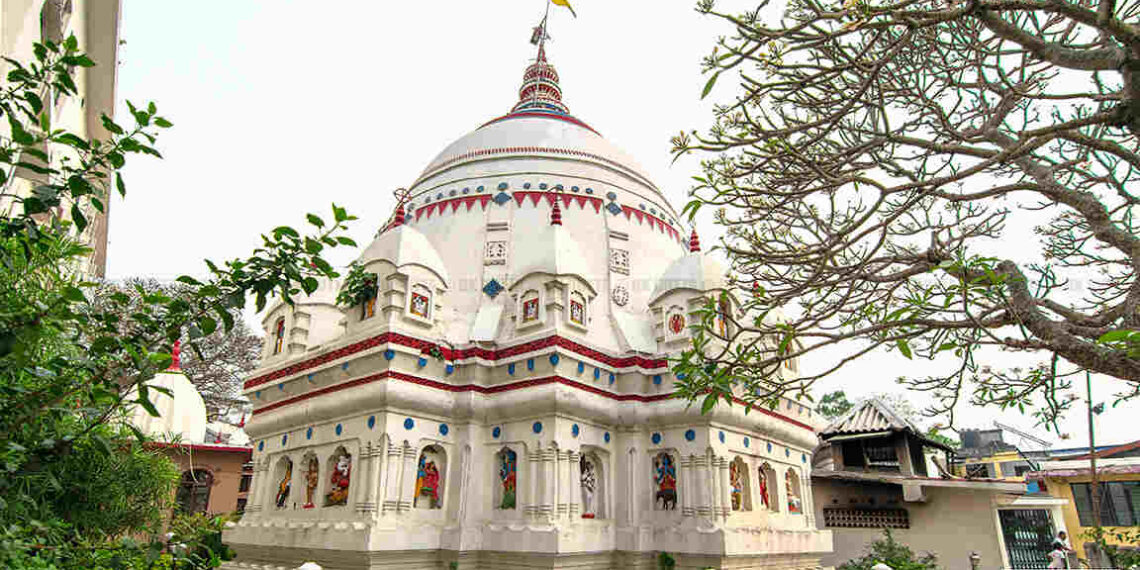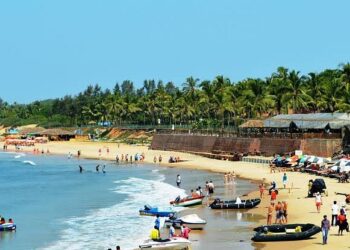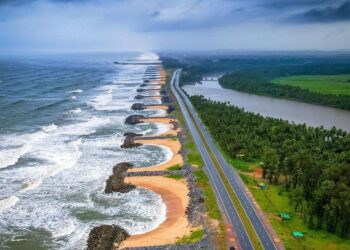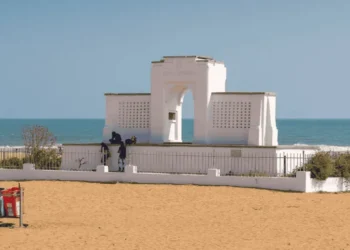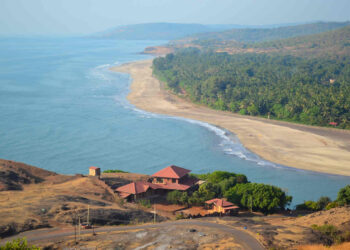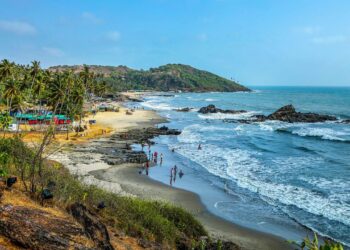Sitting on Sukreswar (also called Itakhuli) Hill along the southern banks of the Brahmaputra River in Guwahati, Assam, Sukreswar Temple is a prominent Shiva shrine dedicated to Lord Shiva. The temple is famous for having one of the largest Shiva Lingams in India.
History of Sukreswar Temple
Sukreswar Temple has a history closely tied to ancient legends and the Ahom dynasty. The present structure was built in 1744 CE by Ahom King Pramatta Singha, with later support from King Rajeswar Singha, who in 1759 provided funds to promote Shaivism. Even though the temple we see today was built in the 18th century, the hill it sits on, called Hastagiri, meaning “elephant’s hump”, has been sacred since Vedic times. The Kalika Purana refers to this spot as a place of worship, showing its spiritual importance long before the Ahom kings. Over the years, the temple has been repaired and restored several times, keeping its role as a major center of devotion in Guwahati, which was once known as Pragjyotishpura.
Architecture of Sukreswar Temple
Sukreswar Temple is built mostly from stone and bricks and shows old Assamese style with little touches from Hindu, Buddhist, and even Mughal designs. The main part of the temple has a very big Shiva Lingam, said to be one of the largest in India, which people see as a sign of divine power and creation. The roof is dome-shaped with a kalasha on top. There are small halls for rituals and pujas, sometimes for weddings too, and a little shrine for Lord Vishnu.
Legends of Sukreswar Temple
The temple is named after Sage Sukracharya (Shukra), the teacher of the demons and an expert in astrology, who is believed to have lived on this hill and worshipped Lord Shiva with deep penance. The Kalika Purana describes the site as highly sacred, saying the hill’s elephant-like shape stands for strength and stability. People in the area believe that doing rituals for the dead here can help their souls find moksha (salvation) and peace, making the temple important for ancestral rites. Another tale connects the temple to tantric practices, showing Shiva’s power to transform and bless devotees in this riverside spot.
Worship, Festivals, and Practices at Sukreswar Temple
Sukreswar Temple is mainly for Lord Shiva. Archana is done by chanting holy names, and aarti is performed as part of the daily prayers. People bring milk, flowers, fruits, bel leaves, incense, and small earthen lamps, thinking it will give peace, good fortune, and their wishes fulfilled. The temple follows Shaivite and tantric traditions, and some Buddhists visit too because of the mix in culture and architecture. In the adjoining halls, people do post-death rituals and weddings. Animal sacrifice is very rare, and most offerings are non-violent.
The temple becomes very busy during festivals. Maha Shivratri, in February or March, is observed by great number of people coming for night-long prayers, special pujas, and processions. The temple is decorated with lights and flowers at that time. Shiva Chaturdashi and the month of Shravan (July–August) are also important, when devotees take dips at the ghat nearby. Navratri is celebrated with programs honoring Shiva’s consort, and many people gather.
How to Reach Sukreswar Temple
By Air: The nearest airport is Lokpriya Gopinath Bordoloi International Airport, about 21–23 km away. Flights connect to Delhi (around 2 hours) and Kolkata (1 hour). From the airport, taxis or buses take roughly 30–40 minutes to reach the temple.
By Train: Guwahati Railway Station is 3–4 km from the temple, with trains linking to Delhi (24 hours) and Dibrugarh (8 hours). From the station, autos, taxis, or buses take around 10–15 minutes.
By Road: Sukreswar Temple is in Panbazar on NH-27 and is easily reached by city buses, auto-rickshaws, or taxis from Silchar (8 hours) or Tezpur (4 hours). Parking is available at the base of the hill.
Best Time to Visit: The months from October to March are good because the weather is cool, around 15–25°C. It’s nice for climbing the more than 400 steps and seeing the sunset over Brahmaputra. Temple opens every day from 5–6 in morning to 7–8 at night. Weekdays are quieter, early mornings 6–8 AM are very peaceful and calm. Maha Shivratri and other big festivals get very crowded, so better go early. Monsoon months, June to September, not very good because steps get slippery.
Nearby Places to See:
Umananda Temple: About 5 km, on Peacock Island. You need a short boat ride. Very peaceful by the river.
Navagraha Temple: 3 km away on Chitrachal Hill. Focused on planets and astrology, nice views.
Basistha Temple: 10 km, quiet Shiva shrine in forested Garbhanga with small streams.
Assam State Museum: 4 km away, shows Assam’s old history, artifacts, and culture.
